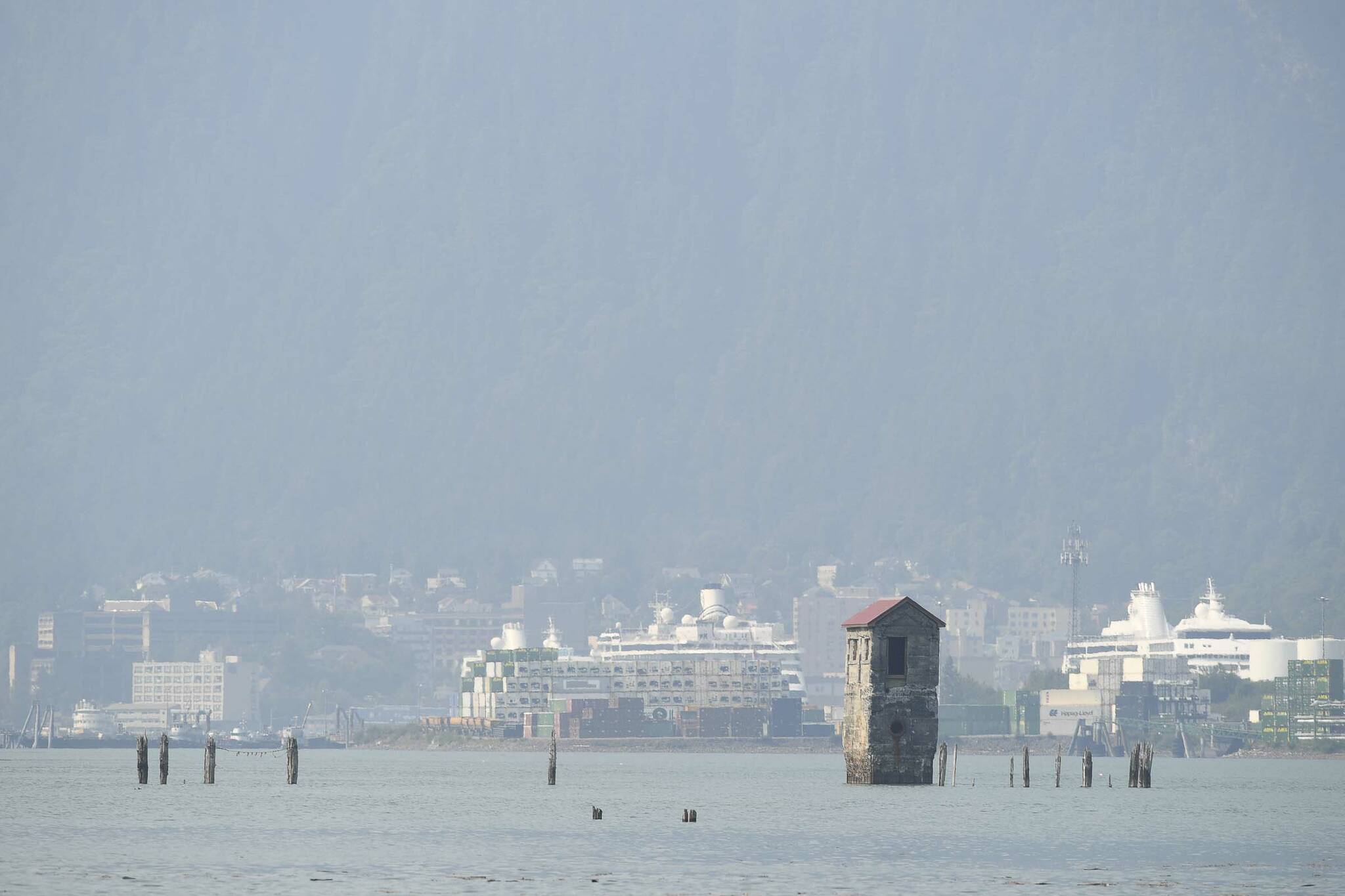Even with Juneau breaking its record for the most rainfall recorded in a single year during 2022 and with the Southeast Alaska region expected to get around 14% wetter by 2025, that doesn’t mean the region will be immune to drought in the future, according to a recent report that examined droughts in Southeast Alaska.
[Juneau breaks rainfall record]
The report, created jointly by a handful of local climate institutions, retroactively explored the continued impacts of a recent long-term and extreme drought that occurred across Southeast Alaska between 2016-2019. The researchers examined why the drought was different from previous droughts in the region and what future dry spells could mean for the region moving forward as the climate continues to warm across the globe.
“No, this was not the first drought, but this was perhaps the first warm and dry period drought,” said Rick Thoman, Alaska climate specialist for the Alaska Center for Climate Assessment and Policy at the University of Alaska Fairbanks. “Up until now, we didn’t have to think about the heat component of drought — it’s clear that is no longer the case.”
Thoman said though to many people it may seem backward that a place as notoriously wet as Southeast Alaska could experience a drought, he said it’s important to remember dry spells are determined by the lack of precipitation relative to a location.
In the case of the 2016-2019 drought, many other regions in the Lower 48 would have likely seen the amount of precipitation during time as abundant. However, in many places in Southeast Alaska, the prolonged dry spell meant both short and long term negative impacts to the region’s communities and natural resources.
Some of the impacts outlined in the report included water restrictions in communities, including Haines and Wrangell, due to low water levels in lakes and reservoirs, the defoliation of 530,000 acres of forest due to an outbreak in hemlock sawfly in 2018 which was exacerbated by the warm and dry conditions and the region also saw an increase in the risk of wildfire.
According to the report, in 2018 the Tongass National Forest crew responded to 32 wildfires, which is around 10-15 more wildfires than what normally occurs each year. The 2016-2019 drought was both warm and dry, Thoman explained, making it somewhat of an outlier compared to the previous droughts throughout the past decades that have impacted the region which saw below-normal temperatures. He said the change in temperature will be an important factor to follow moving forward as global temperatures continue to rise and make conditions for wildfires increasingly frequent.
“It’s been dry before, it’s going to be dry again,” Thoman said. “People should be thinking about how we will deal with the next dry time and I think the fact that it’s getting warmer is going to exacerbate those dry times.”
In early January Capital City Fire/Rescue’s Facebook account reposted a story that examined the record-breaking wildfire season in Bristol Bay which experienced its largest wildfire season on record last year and nearly 416000 acres burned, according to the story. CCFR Fire Chief Richard Etheridge expressed concern that Juneau could soon follow in its footsteps.
“We do see our forests drying out for parts of the year. The levels of ground and ladder fuel we have could in the right circumstances result in catastrophic fires as we have never seen before,” Etheridge wrote in the Facebook post. “Warm dry weather with humidity below 30% and some wind are what we are looking for when deciding on a local open-burning suspension.”
CCFR Fire Marshal Daniel Jager agreed.
“A lot of people think because we’re in a rainforest we don’t have any issue with wildfire and there is no need to worry or concern about it, but there have been times in the past where we have really dry conditions,” Jager said to the Empire. “Hopefully it doesn’t happen this year but we ask people to be extra careful just so we don’t have any potential for it.”
According to the report, the temperature in Southeast Alaska is expected to increase around 6 degrees Fahrenheit by the turn of the century, and there will likely be more evaporation in summer, which could increase the chance of drought even with the increase in precipitation.
“This is going to happen again, and if it gets warmer and not wetter things can go south,” Thoman said. “We don’t know where or when, but we can be sure it’s going to be warmer and it’s getting warmer because the climate is changing.”
Andrew Hoell, a research meteorologist for National Oceanic and Atmospheric Association who worked on the report, said there are so many variables that go into annual precipitation amounts and drought that it’s difficult to pinpoint what the future dry spells in Southeast Alaska might look like and what issue or changes might occur in response to them.
“The future is interesting just because the precipitation in the region is going up and at the same time the temperature is also going up as well and I think it will be interesting to see how those contributions manifest in drought,” he said.
Thoman agreed and said looking to the future, communities in Southeast Alaska should be thinking about ways to prepare for extreme drought which, though on the decline, will likely be more impactful due in part to the rising temperatures.
“It’s been dry before, it’s going to be dry again,” he said. “People should be thinking about how we will deal with the next dry time and I think the fact that it’s getting warmer is going to exacerbate those dry times.”
• Contact reporter Clarise Larson at clarise.larson@juneauempire.com or (651)-528-1807. Follow her on Twitter at @clariselarson.

